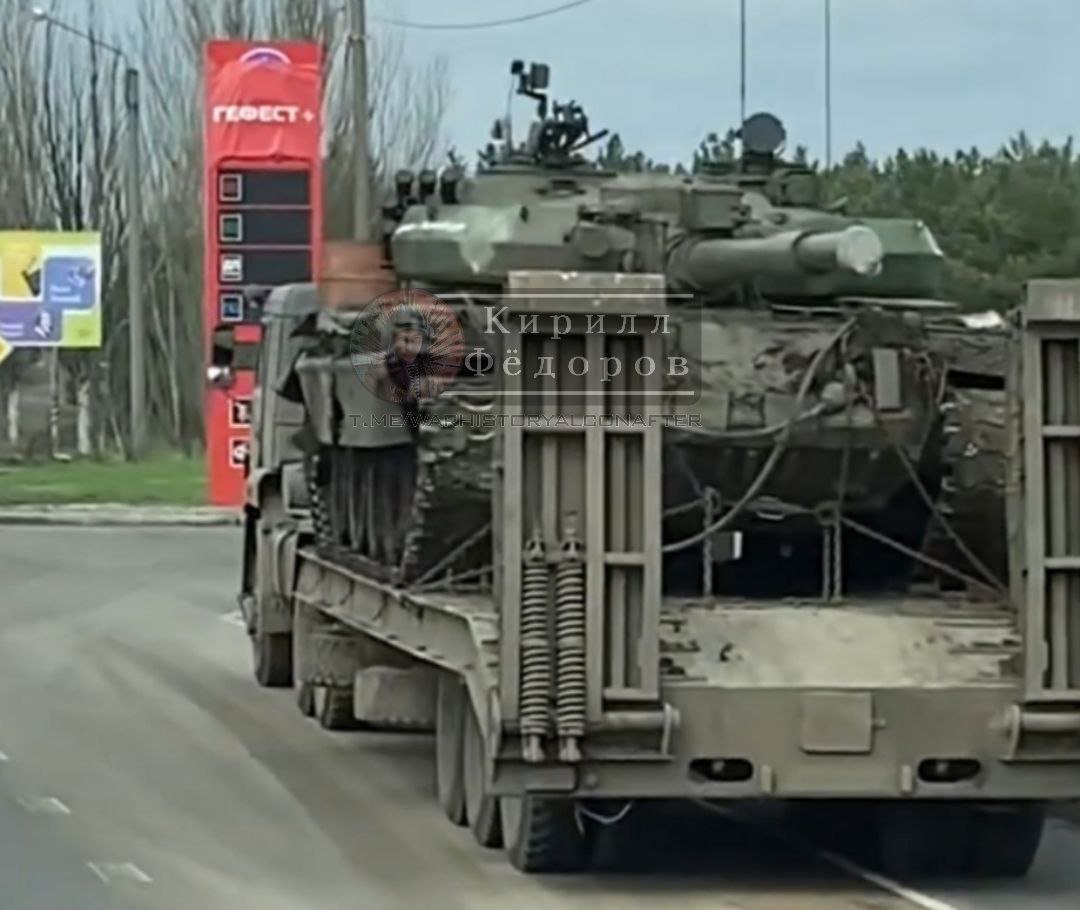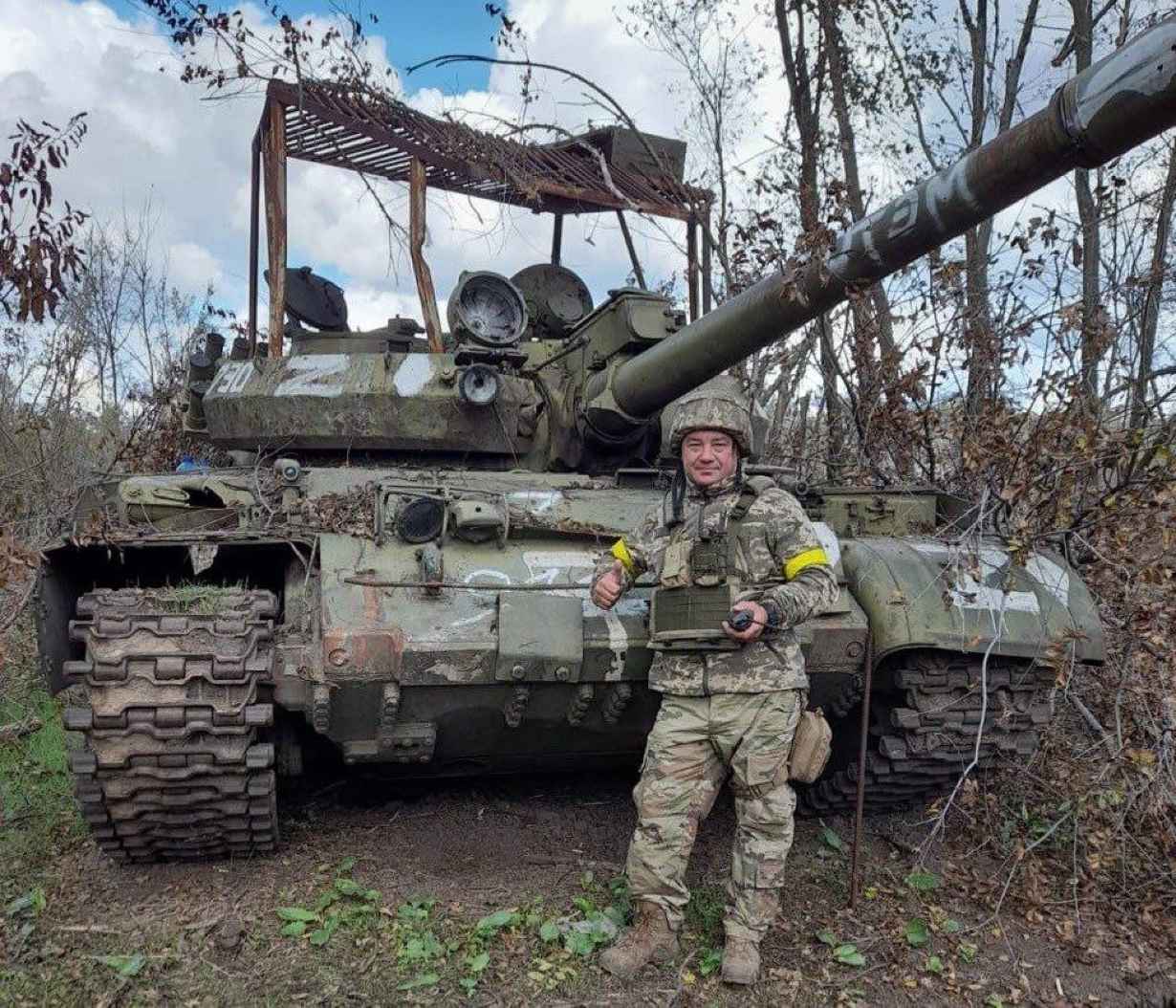Russian forces have begun deploying “suicide tanks” in the Ukraine war, which involves loading obsolete Soviet-era tanks with explosives, remotely guiding them towards Ukrainian trenches, and triggering detonation, resulting in devastating fireballs.
In recently shared online video footage, a T-54 or T-55 tank believed to be around 70 years old, was observed outfitted with approximately six tons of explosives and guided remotely as it advanced toward a Ukrainian trench.
However, the vehicle-borne improvised explosive device (VBIED), also known as the VBIED, faced a destructive end, as it encountered a mine and subsequently came under attack from a Ukrainian anti-tank missile, causing it to vanish within a billowing cloud of smoke and debris.
The massive explosion occurred a mere 200 feet away from Ukrainian soldiers, potentially resulting in casualties among their ranks, with some soldiers possibly being killed or injured due to the powerful blast.
Russian media asserted that the remote-controlled explosive device led to a significant number of Ukrainian casualties, but the accuracy of those figures could not be independently verified or confirmed at the time.
Just unbelievable!
Russians in Ukraine stuff obsolete T-54 tanks with explosive to use them as "Shaheds".
Luckily, this tank hit a mine, but the follow-up explosion was still horrifying!!! pic.twitter.com/nlJuZEF4wj
— Victor (@Vic14011) June 18, 2023
The video triggered varied responses on social media, with some viewing the tactic as a sign of increasing desperation among Russian forces in the face of the ongoing Ukrainian counteroffensive operation.
On the other hand, others saw it as a demonstration of Russia’s capability to enhance and adapt its tactics, which starkly contrasted the disorderly approach seen during the early stages of the war that commenced in February 2022.
In addition to the T-54/55 VBIED, Russian troops have recently attempted to assault Ukrainian positions by employing an MT-LB tractor packed with explosive mine-clearing line charges.
This comes as the Wall Street Journal reports that Kyiv has been forced to pause its counteroffensive in the southern part of the country due to substantial losses of Western armored vehicles.

By leveraging its superior air power and exploiting Kyiv’s limited air defenses, Russia has effectively targeted Ukrainian armored columns, thwarting multiple offensives and inflicting damage on the advanced Western weaponry that Ukraine has deployed.
According to the UK defense ministry’s daily intelligence briefing on Saturday, Russia has reinforced its attack helicopter presence in the occupied city of Berdyansk, located approximately 60 miles behind the front line in the southern Ukraine region, with over 20 additional helicopters.
Reason Behind Russia’s Decision To Load Old Tanks With Explosives
During the 16-month-long war, Moscow encountered numerous challenges, notably experiencing the destruction of hundreds of its tanks by Ukrainian forces during the early stages of the conflict.
Even before the counteroffensive, the Russian forces reportedly faced a shortage of modern weaponry. As a result, they are now resorting to utilizing long-stored tanks and combat vehicles and implementing increasingly unconventional modifications to existing vehicles.
The EurAsian Times had also highlighted that as supplies of modern T-72B3 and T-90 tanks dwindled, the Kremlin resorted to retrieving upgraded T-62s from the 1980s, first-generation T-72s from the 1970s, and even basic T-55s and T-54s manufactured in the late 1950s from storage, illustrating the extent to which they had to rely on older tank models.
The outdated T-54/55 tanks, with their limited capabilities, including thin armor, basic optics, and minimally-stabilized 100-millimeter guns, are ineffective and even dangerous for crews in intense combat situations, particularly at night.

The Russians initially deployed them as short-range, mobile artillery paired with somewhat more modern T-62 tanks. Their turn to vehicle-borne improvised explosive devices (VBIEDs) reflects the scarcity of resources and the challenging circumstances they face.
Although the success of such missions against well-equipped Ukrainian forces with anti-tank capabilities is unlikely, these options still provide a tactical advantage for Russian forces amidst the ongoing counteroffensive in Ukraine.
Lt. Colonel Nektarios Papantoniou of the Hellenic Army expressed skepticism about the effectiveness of this approach, stating to the EurAsian Times that he doubts it would yield any tangible outcomes.
According to Papantoniou, the tanks are considerably outdated, slow, and highly vulnerable to modern weapons, making them nearly incapable of withstanding attacks.
“Especially nowadays that UAVs, kamikaze drones, and loitering ammunition are so cheap and easy to acquire, tanks such as these don’t have a chance against either fortified positions or concentrations of other weapon systems – to put it plainly, I believe that they will easily be destroyed from a great distance, much sooner than closing in in a target of actual value, whether this is a force of any type or fortifications,” he said.
Papantoniou described three potential scenarios, two of which he believed would have limited effectiveness and one that would be truly “dreadful.”
Firstly, he suggested that “these efforts are “experiments” before utilizing similar modern robotic vehicles or armored VBIEDs against tough fortifications, buildings of great importance and/or concentrations of ammunition and other materials important for the counteroffensive.”
Secondly, Papantoniou considered the possibility of using remotely controlled vehicles alongside regular weapon systems, hoping that “they will go unnoticed for enough time to be able to close in on their targets.”
However, he found this scenario unlikely since early destruction would damage nearby friendly vehicles.
The third scenario, which he described as dreadful, involved employing “similar tanks with tactical nuclear warheads of a few kilotons, instead of actual missiles as delivery systems. They would be destroyed early, but the explosion blast would annihilate any forces nearby.”
Papantoniou emphasized the potential terror that such a “dirty VBIED-bomb” would instill fear in frontline troops, speculating that the anxiety of a potential nuclear blast might cause them to abandon their positions to avoid being killed. Yet, he sincerely hoped that this nightmarish scenario would remain untested in real life.
He concluded that the potential utilization of tactical nuclear weapons could unleash widespread terror on a global scale, and the consequences of such an action would be tough to mitigate or resolve.
That being said, recent reports suggest that Russian forces have displayed enhanced discipline, coordination, and air support, indicating a shifting dynamic in the war.
For instance, Russian armored columns have adopted a more cautious approach, avoiding hasty advances into vulnerable areas.
Instead, troops rely on drone surveillance, probing attacks, and vocal communication to identify Ukrainian trenches before launching strikes.
Nonetheless, the experts believe that the improved tactics employed by Moscow will likely make it a more formidable adversary, especially when engaging in defensive operations that capitalize on its inherent battlefield strengths.
- Contact the author at ashishmichel(at)gmail.com
- Follow EurAsian Times on Google News




